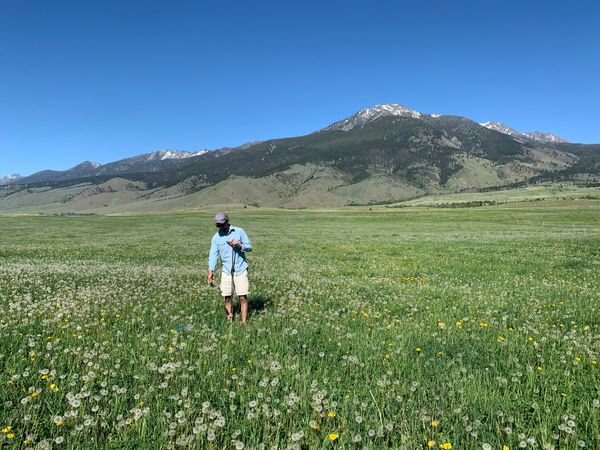Bee Friendly and Weed Wise
Written By Ford Smith
Spring is full of frenetic energy. There is buzzing of Bees, melting of snow, and frantic homeowners trying to keep up with their yards. Don’t get caught up in the hustle this year and make the classic mistake of spraying for weeds in the spring.
Let’s start by addressing that term: “weed”. It means, “a wild plant growing where it is not wanted and in competition with cultivated plants.” You could be a real hero at your next HOA meeting if you lovingly reminded your neighbors that Kentucky Bluegrass is the “weed,” not diverse and essential forbs and legumes. But I digress.
There are some noxious weeds that the state has identified as truly bad (notice dandelions are NOT on this list :) ). If plants like Hoary alyssum show up in your yard, it won’t be the end of the world. But if one of their seeds finds its way into your boot soles before you take a hike up Hylalite, you could be the vector for some serious ecological damage. We HIGHLY recommend you familiarize yourself with this list. When you see any of them in your yard, take the time to pull the entire plant out of the ground, including its roots, after an early morning sprinkler session when the ground is wet and yielding. Aim to eliminate all such noxious weeds from your yard before they go to seed later in the summer.
Now to that all-too-common mistake: booking a spring weed spray. We know it’s tempting to act when the weeds are in full bloom, popping up their heads after a long and cold winter. But for the sake of the bees, your family, and your pets, try to resist. Those chemical herbicides are harmful to people, insects, and animals alike, including the lawn technicians who are hired to spray them all day, every day for $15 an hour. Instead, hand pull the weeds in the spring. If you need help, we are offering a new noxious weed hand pulling service.
What about weed sprays during other seasons of the year? Although we don’t advocate any weed sprays, if your lawn is completely overrun and you feel like you need to do something drastic, choose to spray in the fall. A fall chemical spray is much more effective than one done in the spring when the weather tends to be rainy and plants are growing robustly. In the fall, weeds push nutrients down into their roots to prepare for winter. If you spray them then, the herbicide will get pushed down, too, allowing for a smaller overall load of chemical to do optimal damage to the root system.
A fall spray is also less harmful to pollinators like bees. There is nothing worse than spraying chemicals in the spring when the bees are waking up from a long winter and looking for food. The combination of ever increasing pesticide use and climate change has made for an already tough environment for the bees. They don’t need even more obstacles getting in the way of performing essential ecosystem services. Give them a break this spring by embracing the benign weeds in your yard - like dandelions - and opting to hand pull the noxious weeds.
Ford is a microbe activist, soil enthusiast, and whitewater kayaker. He started Organic Lawn to help keep our rivers and oceans free of chemicals and has continued that work with his other business Regenerative Land Solutions.
.jpeg?fit=outside&w=1600&h=1200)














